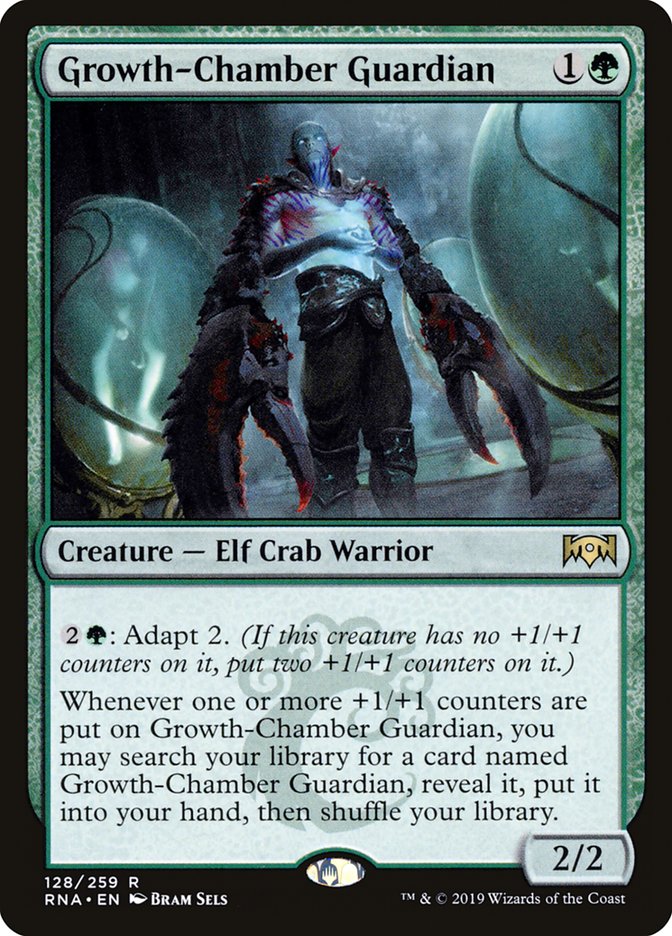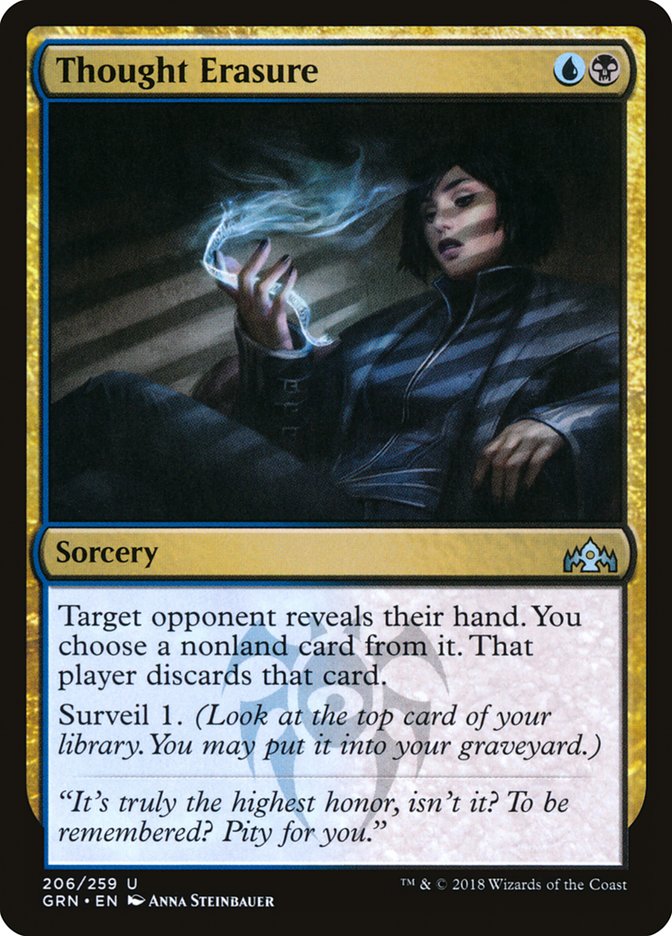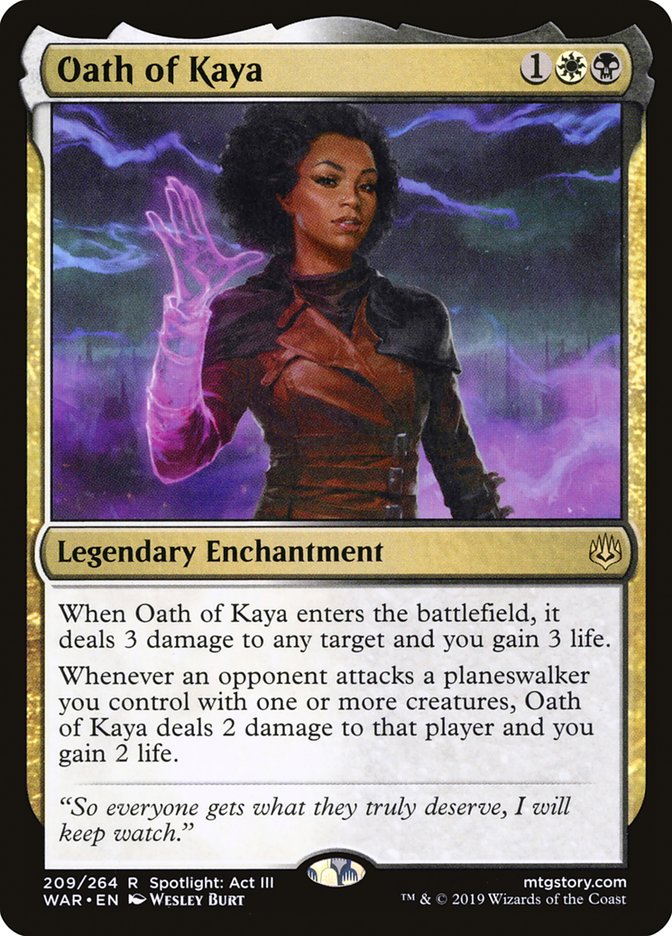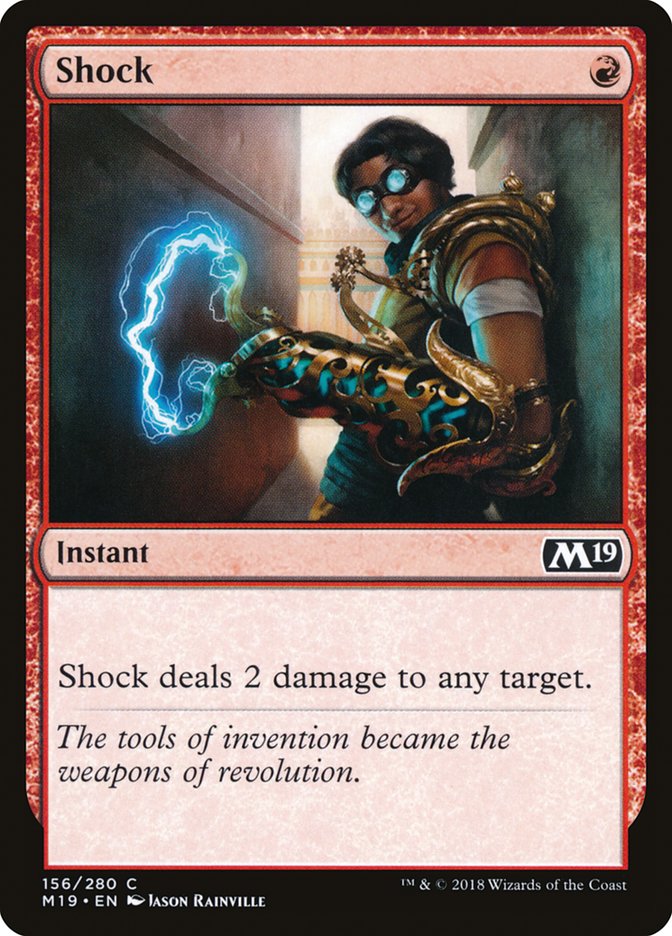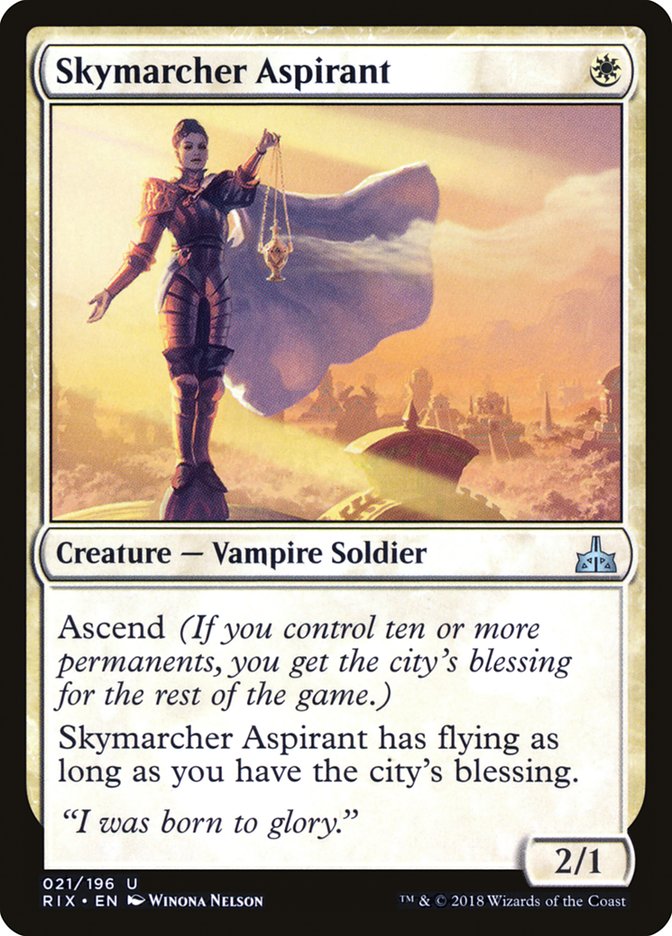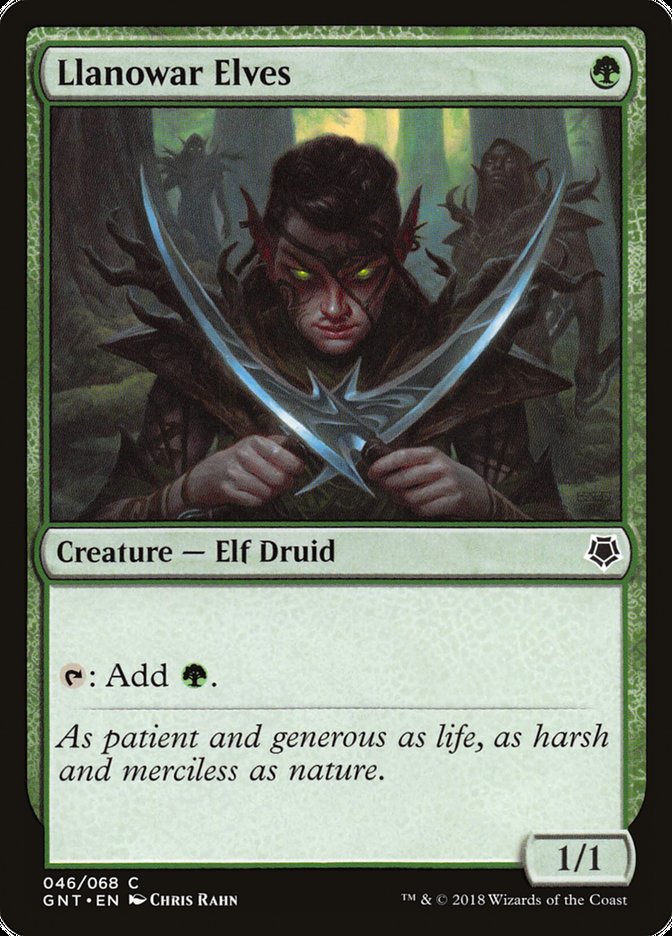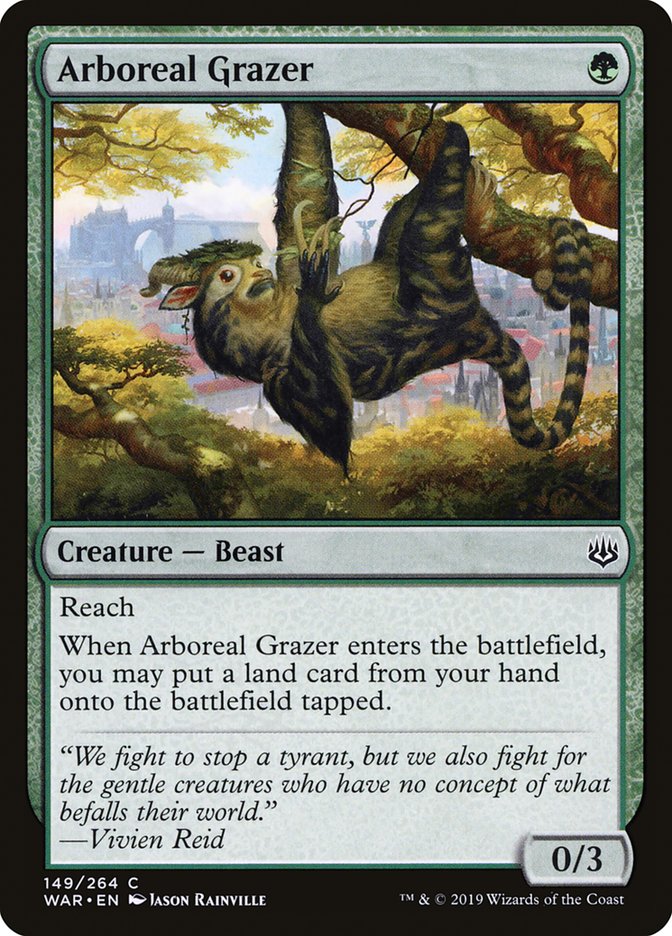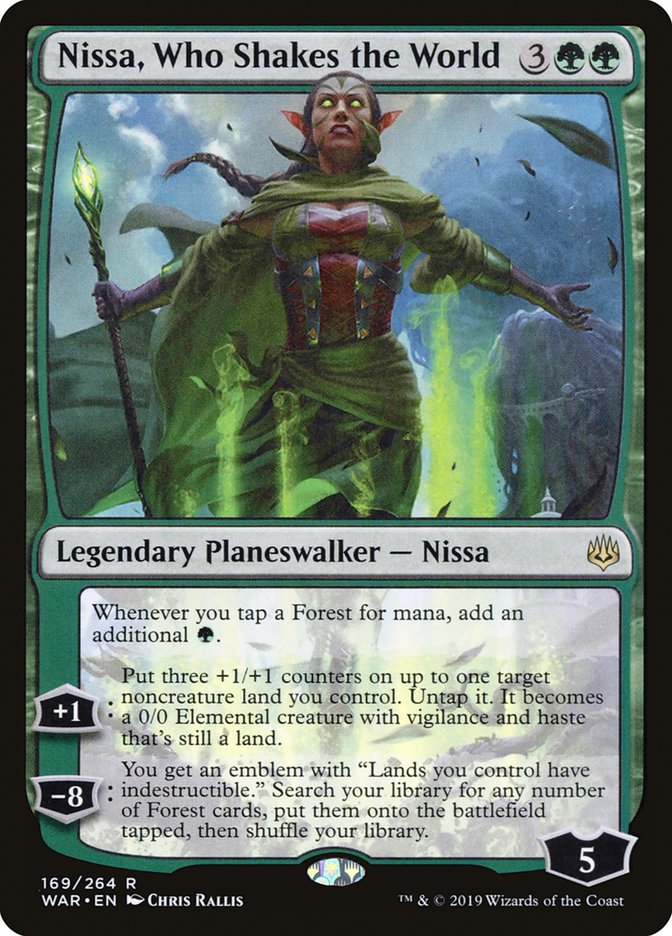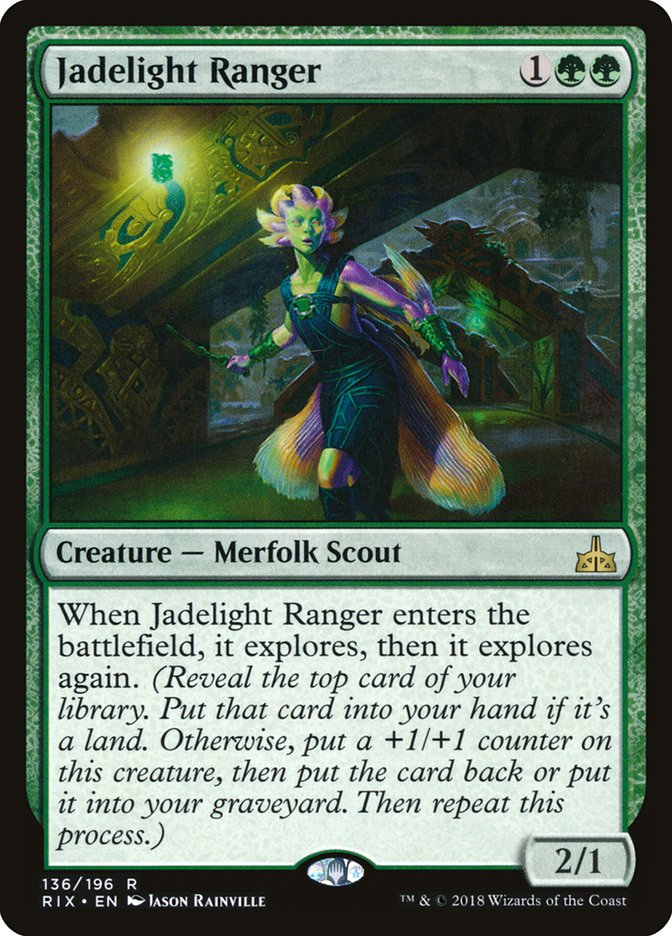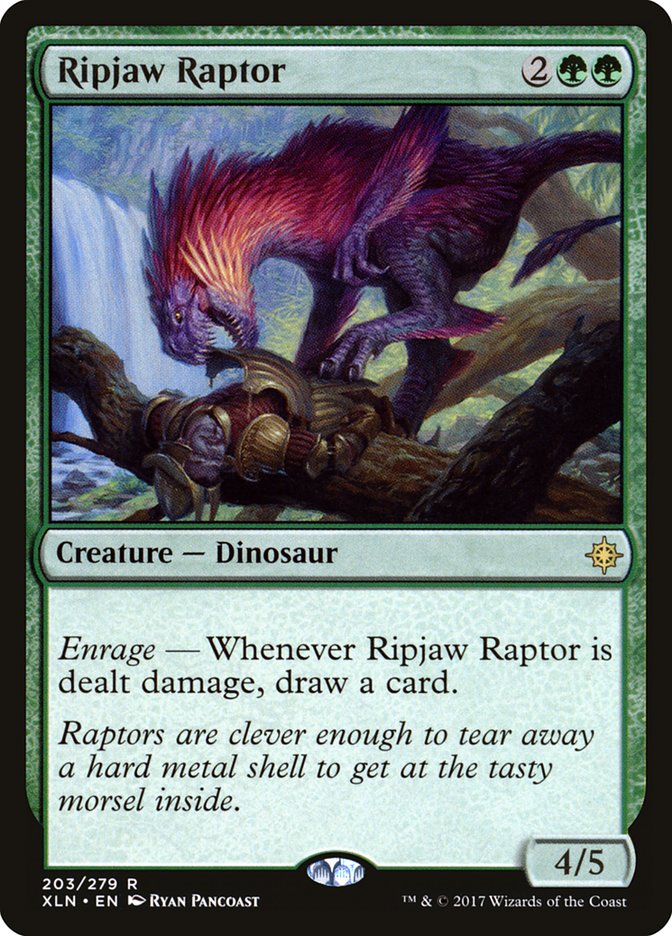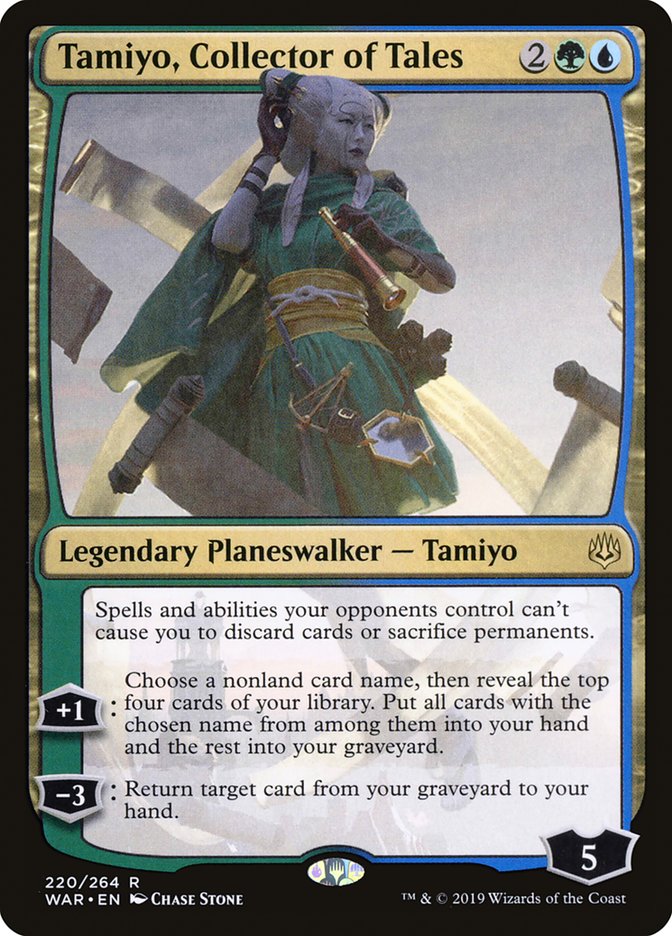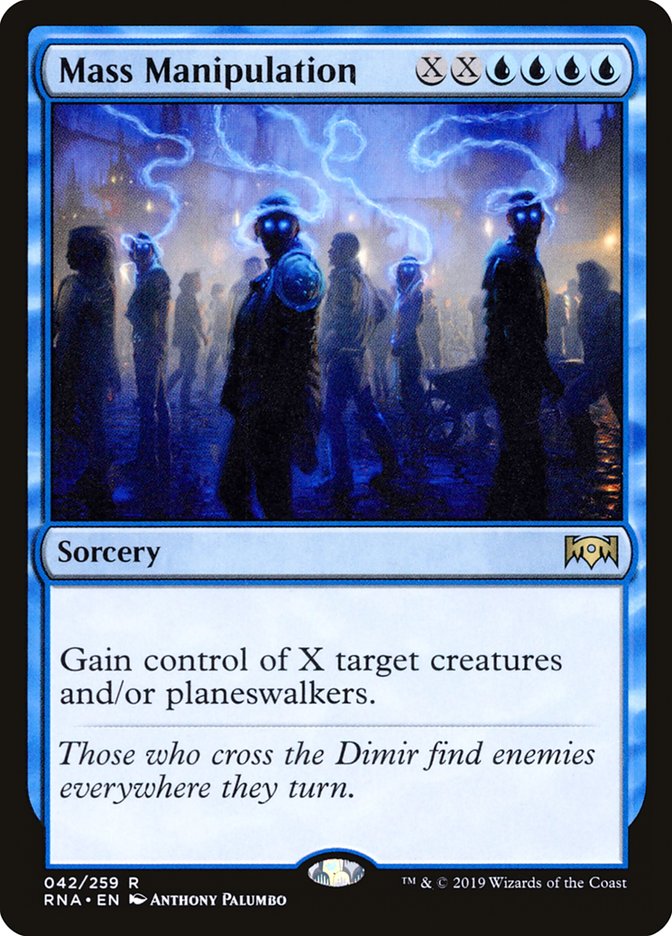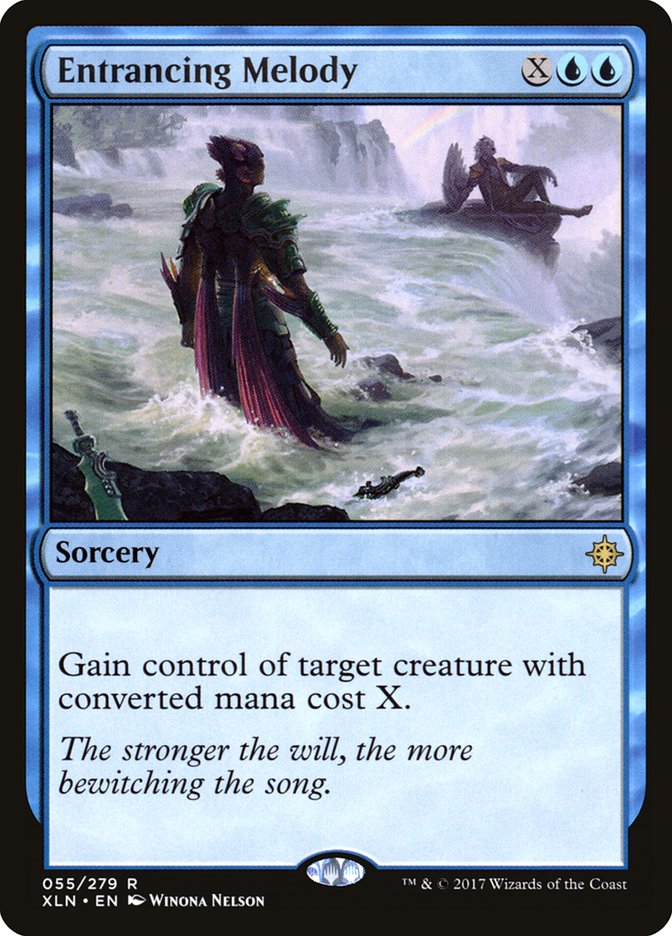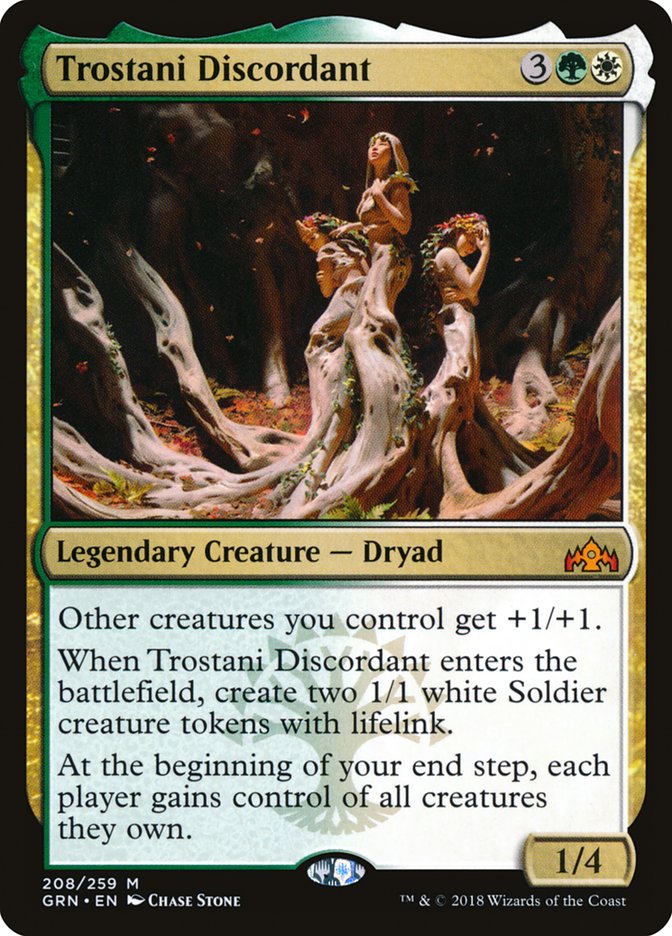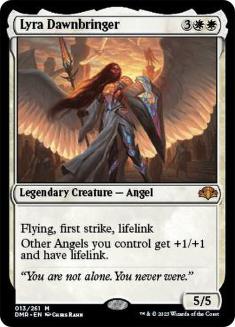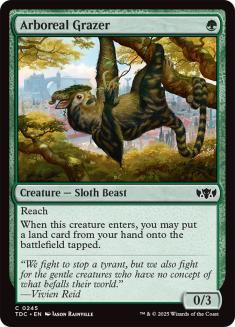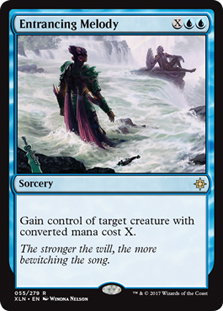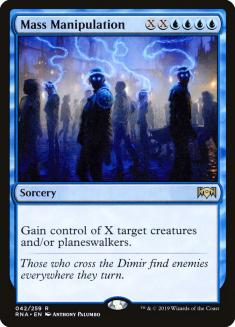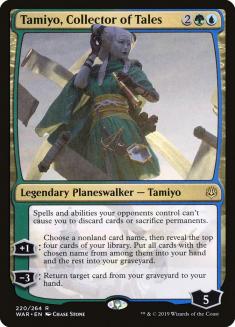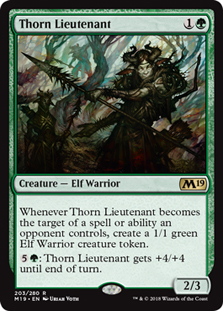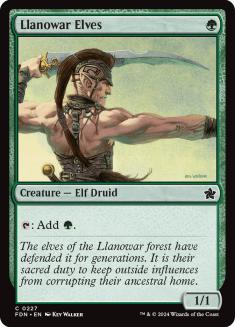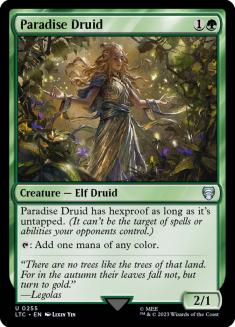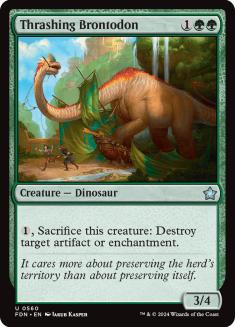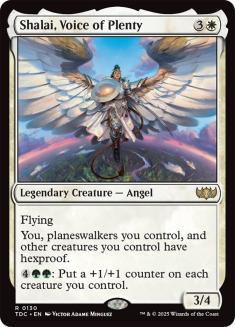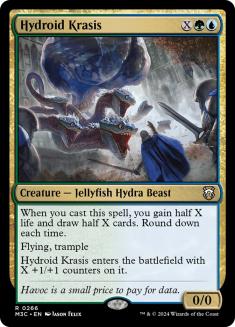I made a horrible deck choice at the Season One Invitational. If you just look at the results, you could easily make the same one.
I played Esper Superheroes. I should have played Bant Mass Manipulation. It all came down to the last-second coin flip.
Esper Superheroes is a bunch of good cards, but it is fundamentally terrible for the format. Simic or Bant Mass Manipulation on the other hand plays a game that exploits the format perfectly.
Creatures (18)
Planeswalkers (8)
Lands (26)
Spells (8)
Sideboard

Here’s how and why.
Traction, Play or Draw
For about the millionth time since War of the Spark was released, here’s Michael Majors’s Traction article. If you haven’t read it, this is the most important piece of Magic theory in the last half a decade and by far the most important piece for War of the Spark Standard.
The other thing you need to understand (that has also been said a million times) is that using removal on planeswalkers sucks. Every reasonable planeswalker in Standard immediately provides a card of value on first use, so if you have to Lightning Strike or Vraska’s Contempt them, you are down a card. Even if you use The Elderspell and kill two planeswalkers, you are down a card, probably more because one of those two activated twice. If you want to kill a planeswalker profitably, you need to spend zero cards and do it in combat.
The other threats in the format are also a pain to answer. The cards needed to beat Ghitu Lavarunner, Gruul Spellbreaker, and Command the Dreadhorde are wildly different and they all come with planeswalkers attached.
Also related to this, there’s no clean answer to multiple diversified threats.
The other thing that is obvious to everyone by now is that of the top ten or so best cards in the format, about half of them are planeswalkers. Every deck is showing up with them, and you aren’t going to just dodge the issue somehow.
With that all put together, you have the following mess.
Every deck in Standard is about 40% mana, 40% mythic-rare-level threats that all provide cascading absurd advantages if they survive and shrug off removal, and 20% not-actually-good removal that you are kinda hoping lines up right with the mythic rares they draw.
Even the Mono-Red Aggro deck works this way. It just happens that instead of “activate my planeswalker and get a physical card,” untapping with an unopposed 2/2 in that deck is “attack for a card worth of burn value.” Cascading advantage, just not obvious card advantage.
Every deck in Standard is full of threats that are insane if you land them before your opponent can attack them. In the case of most of these, that translates to being on the play so you activate your planeswalker before they do something, but many other things can play at this.
Great sample experience from the Invitational: I lost the die roll against Gruul. My opponent casts a Growth-Chamber Guardian on Turn 2. I have Thought Erasure and Oath of Kaya in my hand. That’s cool, I guess. Am I supposed to just not do anything on Turn 2, hope they main phase activate so I can Thought Erasure on Turn 3 and stop the chain, and still take eight damage and be facing down their four-drop?
The entire Esper Superheroes maindeck is built like that. On the play, you are able to Tyrant’s Scorn their two-drop; jam Narset, Parter of Veils; and lock it up. On the draw, this just doesn’t happen. Their three-drop usually isn’t something you can Tyrant’s Scorn or Cast Down, you couldn’t Thought Erasure your two-drop, you are then out of position for your three-drop, and things just get horrible from there.
Esper Superheroes is a bunch of good cards, but it has no plan when on the draw besides hoping their hand fails or hoping your sideboard carries you home.
Breaking the Die Roll
This isn’t an Esper-isolated issue; other decks just have the same on the flip side. All of Gruul’s haste creatures are miles better when ahead, and there’s this nice poll about Mono-Red Aggro.
With standard mono red, would you trade 5 sideboard slots for a 70% chance to win the die roll?
— Ethan Gaieski (@morticiansunion) June 1, 2019
The first month of War of the Spark Standard might have been about figuring out which cards were unbeatable, but this month is all about figuring out how to exploit the patterns of the best cards.
If the main pattern is that being on the draw is a problem, how can we build the best deck on the draw?
Relevant one-mana spells: an obvious start. If you take a relevant game action on Turn 1, that’s breaking the play-draw symmetry. Shock is the obvious one, and you see it in a ton of decks from Jeskai Superfriends to Mono-Red Aggro to Izzet Phoenix to Gruul.
But does everyone remember what I said about answers? Every answer in Standard right now is “not actually good removal that you are kinda hoping lines up right with the mythic rares they draw.” That includes Shock. It answers a second Narset, Parter of Veils activation; Hero of Precinct One; Growth-Chamber Guardian; and so on. Still, it doesn’t really do anything against Gruul Spellbreaker; Nissa, Who Shakes the World; you get the picture.
We don’t want a one mana answer. We want something proactive that costs one.
The problem with all the attacking one-mana creatures is they fall right into the play-draw trap. On the draw they get to attack once into the two-drops, and then are immediately massively outclassed by them. Think about one turn down the line against Hero of Precinct One. Yuck.
Llanowar Elves, though, is legitimately broken. I don’t know why I didn’t play Llanowar Elves last weekend, and I’m unsure I can entertain playing any deck without that card in the future. They stopped printing Llanowar Elves because it made the current-design-era threats too good, reprinted it only when there weren’t these cascading threats in huge numbers early on the curve, and then threw that all out the window.
If you have Llanowar Elves on the draw, you are actually on the play. If you have it on the play, you are on the super-secret double play.
There’s a rule to how the format plays out, and Llanowar Elves just breaks it in half.
My Definitely Better List
Here’s the list of Bant Mass Manipulation I was looking at playing for the Invitational, very similar to what I said in What We’d Play last week.
Creatures (17)
- 4 Llanowar Elves
- 1 Lyra Dawnbringer
- 1 Shalai, Voice of Plenty
- 4 Hydroid Krasis
- 4 Paradise Druid
- 3 Arboreal Grazer
Planeswalkers (7)
Lands (28)
Spells (8)

The most notable difference between my list and the stock configuration is that I’m still on Arboreal Grazer, where the stock configuration has two fewer lands and some Paradise Druids.
This all has to do with math. Very easy math.
One is less than two.
The entire basis of the Mass Manipulation decks isn’t their namesake sorcery. It is Nissa, Who Shakes the World. Nissa is the planeswalker that beats other planeswalkers. Literally, in the face, with a 3/3 land. The faster you resolve a Nissa, Who Shakes the World, the better.
No matter how many ways you mash together two-mana ramp spells, the fastest you can cast Nissa is Turn 4. It doesn’t matter which Druid you cast on Turn 2; you have four mana on Turn 3 and that won’t change.
I want free wins. I want Turn 3 Nissa, Who Shakes the World. And that always involves a one-mana ramp spell into any other ramp spell, so Arboreal Grazer it is. The increased number of extra-land-required ramp spells means I have to play more lands, which honestly isn’t a bad thing. If you hit ramp spells but miss your land drops, you aren’t actually getting ahead of your curve.
Growth Spiral is also secretly a one-mana ramp spell because you can use the land you put onto the battlefield that turn. This matters a lot in the games where your Llanowar Elves gets killed and you need to reassemble, or if you need to take a middle turn to interact and still want to ramp, especially if you drew a secondary threat instead of Nissa. Hydroid Krasis and Mass Manipulation both come online at six mana, so there’s always that awkward gap Turn 3 where you can’t use them and have to do something. Often that is Growth Spiral plus Teferi, Time Raveler.
Creatures (23)
- 4 Llanowar Elves
- 1 Lyra Dawnbringer
- 2 Shalai, Voice of Plenty
- 4 Hydroid Krasis
- 2 Frilled Mystic
- 4 Incubation Druid
- 4 Paradise Druid
- 2 Tolsimir, Friend to Wolves
Planeswalkers (6)
Lands (26)
Spells (5)

One caveat to this: Christopher Johnson might just be super-smart for not playing Growth Spiral. Time to check “Ari talks about how good Narset, Parter of Veils is” off the bingo card for the week.
This is one reason to play Paradise Druid over Incubation Druid. Paradise Druid attacks planeswalkers, while Incubation Druid really doesn’t. Paradise Druid is also surefire hexproof ramp except against Goblin Chainwhirler, and it wasn’t like Incubation Druid was surviving in that matchup anyway.
This focus on the most reliable nut draws possible points away from the middling creatures a lot of people play. Jadelight Ranger isn’t really stopping anyone early or doing anything on the scale of your late-game, so why is it there? If your first play that isn’t immediately killed is Ripjaw Raptor, are you really beating an aggressive deck?
Baffling End is the one low-end card I would consider outside of the creatures. Thorn Lieutenant was much better against planeswalkers when they came with Shocks and Lightning Bolts and not Hero of Precinct One and Basilica Bell-Haunt, and access to spot removal would be nice in a couple of spots. There are only twelve white sources, though, which is dicey.
You may also notice I’m much less excited about Tamiyo, Collector of Tales than other lists seem to be. These Mass Manipulation decks do nothing until casting one spell that does everything. Tamiyo certainly isn’t a spell that does everything on its own, and if you did nothing beforehand it is really hard to protect her. That makes her a split card: four-mana Impulse or win more, which is really unexciting.. The one sideboard copy is a concession to weird grindy games against Command the Dreadhorde decks where you legitimately need to cast the second Mass Manipulation. Often you can just take their Tamiyo and do this, but sometimes you need your own.
A quick word on the theft spells. The one Entrancing Melody is to allow the deck to be more flexible, since multiple Mass Manipulations are hard to utilize. If the metagame is all Esper Superheroes and Sultai Command the Dreadhorde, I might just start four.
Also, if you are worried about Trostani Discordant, you can stop worrying. The ability only recovers creatures, so Command the Dreadhorde still loses to their own planeswalkers most of the time. Selesnya Tokens is a bit trickier, but also no one actually does that, so don’t worry about it. You can River’s Rebuke them if you really need to.
The Sideboard Guide
You are going to see Teferi, Time Raveler being sideboarded out a lot. Don’t worry about it. Teferi in this deck is just the best Tyrant’s Scorn or Cast Down equivalent Bant can buy, and sometimes you don’t want that.
The same applies to Arboreal Grazer. I probably have to spend less effort explaining this one. It’s good when goldfishing, but worse when both players interact more.
VS Esper Superheroes
Out:
In:
This is a fairly conservative sideboard plan against the current default assumption that your opponent will cut Hero of Precinct One and add Kaya’s Wrath to their deck, but knowing that some people might not. You want a couple more ways to pressure planeswalkers, and Thorn Lieutenant isn’t totally stalled by Basilica Bell-Haunt.
This also operates under the assumption they don’t have Thief of Sanity. How many 0/3s with reach you want is dictated by how many copies of 2/2 flying player-deathtouch your opponent still showed up with. Yes, I did just compare Thief of Sanity to Phage the Untouchable. I don’t think I’m that far off here.
VS Mono-Red Aggro
Out:
In:
Hello, it’s the matchup where Arboreal Grazer is better than Llanowar Elves.
Your sideboard plan is green midrange, with Thrashing Brontodon being the dual-purpose blocker and answer to Experimental Frenzy. Your big spells do a fairly good job of bashing them to death quickly, so you also have that plan to mitigate it.
VS Sultai Dreadhorde
Out:
In:
Teferi, Time Raveler is almost a liability in this matchup. It doesn’t really do much against explore creatures, and if it dies, then they have a Teferi, Time Raveler.
Your plan in order is: cast a big threat, try not to let them cast Command the Dreadhorde, and then cast Mass Manipulation until they concede even if they do Command the Dreadhorde. The “stopping them” part is difficult, but the other parts are literally all your deck tries to do.
You should be especially careful about tapping Paradise Druid early in this matchup. Losing a ramp spell to a Vraska, Golgari Queen if you could avoid it is not great. If that happens after your Nissa, Who Shakes the World or Hydroid Krasis resolves, who cares. Any earlier and you might not cast those spells.
VS Gruul Aggro
Out:
In:
In theory you might want another Entrancing Melody, but you are almost pre-sideboarded for this matchup. They can’t really do anything about your gameplan except attack, and your end-game is stealing all their attackers. Lyra Dawnbringer just happens to be a different ramp payoff they also have extreme difficulty beating.
The biggest card you can’t really prepare for is Legion Warboss. The low-cost creatures you can play to block tokens just aren’t good enough against their other 56 cards. Don’t be afraid to play a 2/2 Hydroid Krasis to keep yourself alive long enough to cast other unbeatable spells.
VS Izzet Phoenix
Out:
In:
Negate is not good against Izzet Phoenix. Their spells are garbage that enables their threats. Play cards that beat their threats and you will beat them.
So far my Izzet Phoenix opponents haven’t shifted to the planeswalker plan against me. Even if they do, your creatures that would attack them out of the sideboard don’t interact with the flying half of their deck, so I would avoid going down that road. If you see a five-cost planeswalker like Sarkhan the Masterless and another planeswalker like Saheeli, Sublime Artificer, only then should you consider Negate.
VS Bant Nexus
Out:
In:
The plan is to hope you can always have a Negate up and just become the aggro deck. Anything that costs more than four is just not on the table, hence why Shalai, Voice of Plenty is better than Hydroid Krasis. It is more power for the maximum you can pay. Tamiyo, Collector of Tales is a huge help with the “always have a Negate” part, and it can find the few lock pieces you have in Teferi, Time Raveler.
VS Azorius Aggro
Out:
In:
You don’t really have a way of rectifying against the good Venerated Loxodon draws, so your plan is centered on tripping up the draws that aren’t quite that good and just tumbling over the top of their plan afterwards. So far I’ve mostly died, but it makes me feel good on the way out that I died with a plan.
As you can see, I’m not here to claim Bant Mass Manipulation is flawless. This format is too high-power and too brutal for anything to really be. But at a base level, Bant Mass Manipulation gives me the fewest games against the best decks where I feel dead when I look at my opening hand, the games Patrick Sullivan described in the Invitational finals as “Can’t keep, can’t win.” Given the rules of engagement of this Standard format, that’s about all you can hope for.


